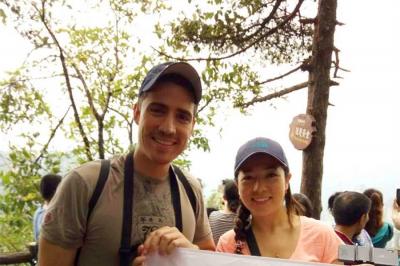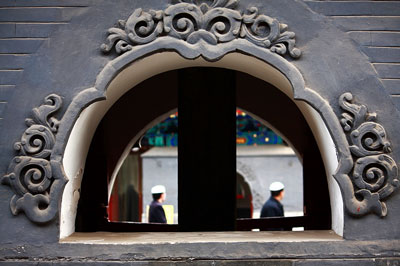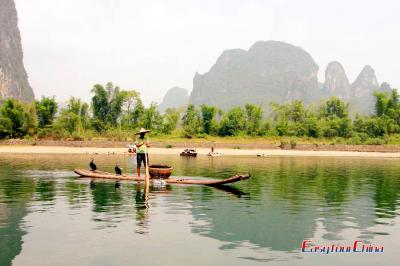Jinkeng Rice Terraces
Located in Longsheng County, Jinkeng Rice Terraces is 90 km away from Guilin. It is home to Zhuang and Yao ethnic minority people. This 66-square-km network irrigation project was created by Zhuang people in the Yuan dynasty (1271 -1368), and finished by the Qing dynasty (1644 -1911). After more than two thousand years of hard work, the development of five or six vertical height, horizontal extension of six or seven miles of rice terraces, created a miracle on earth. It was developed later and is less commercial, which is recommended by most photography and hiking-lovers.
Jinkeng Rice Terraces looks like a naturally formed pits. From the fast-flowing river valleys to the cloud-covered mountain tops, from the lush forest edges to the rocky cliffs, rice terraces have been dug in Jinken wherever there is soil. Some people described it as "a frog jumps covering three fields", "a suit of raincoat can conceal the field", we can see that they do not give up any piece of land that can be developed, cherish soil as gold. The locals’ extraordinary wisdom and perseverance in understanding nature and building their homeland have attracted worldwide attention and won the award of the world's important agricultural cultural heritage.
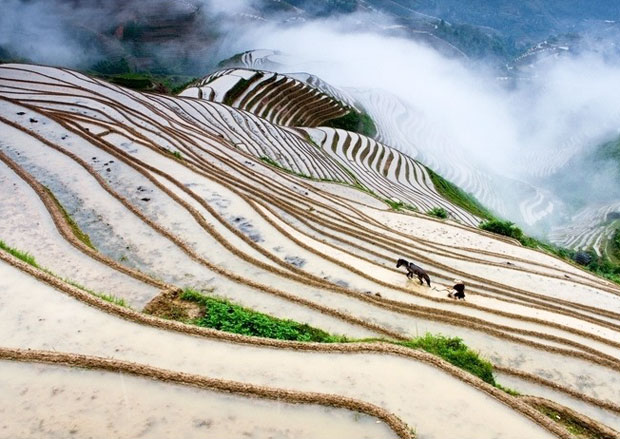
Facts
- In Chinese: 金坑梯田
- Location: Longji Rice Terraces Scenic Area, Longsheng County, Guilin
- Opening time: all year round
- Best time to visit: the end of May - Oct
- Entrance fee: free (included in Longji Rice Terraces)
Highlights
Jinkeng Red Yao Rice Terrace is known as one of the world's greatest attractions, with its magnificent landscape, mist-shrouded mountain peaks, unique Yao villages, and colorful customs, forming a charming picture. It is not only a paradise for photographers from home and abroad, but also offers interesting hiking trails for those who want to explore the real life here.
Well-prepared Nature Environment
Jinken is surrounded by high mountains on each side. Behind Xiaozhai Village, it’s Fupingbao Mountain, the tallest mountain in Longsheng. Over 1500 meters above sea level, dense virgin forest is still maintained in Fupingbao Mountain. There are numerous streams, plenty of water and evergreen vegetation on the mountains.
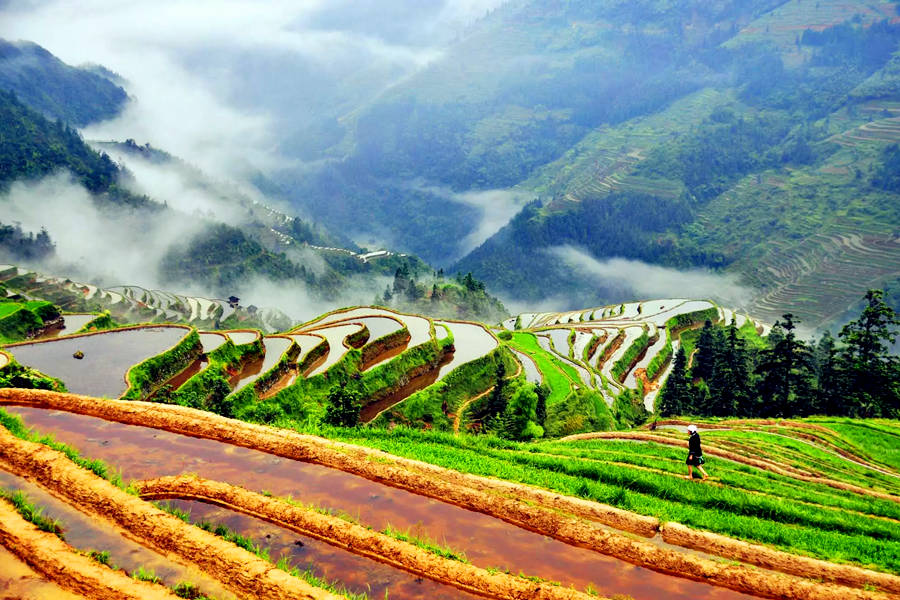
Beautiful and Picturesque Scenery
The orderly and colorful lines of the Jinkeng terraces give people a dynamic beauty, especially those long curves and wavy lines, which remind people of the terraces as if they were streamers falling from the sky. Some of the hills were terraced in circles along the shape of the mountain, like pagodas. Jinkeng Rice Terraced fields have a sense of hierarchy. Due to the steep terrain of here, the terraced fields are more in the shape of belts, with more high and low levels. This is the only part of the Longji Rice Terrace scenic area where you can take a cable car to have a panoramic view of the terraced fields. Through the glass of the cable car, the terraced fields spread from the bottom of the mountain to the top of the mountain, very magnificent.
Strong Ethnic Customs and Traditional Bungalows
The traffic is not very convenient with the outside world so people still live a self-sufficient life. There are two ethnic villages here in Jinkeng, mainly are Red Yao minority people (a branch of Yao nation). They do not have their own words, the history and culture of this nation has been passed down orally in the form of folk songs. Red Yao women like to wear red clothes, hence they got the name.
The first village lying at the foot of the mountain is Dazhai Village. Further uphill, there are two-story bungalows of Yao people nestling against the magnificent man-made wonder. The layout of the village mimics the symmetry of rice terraces, appearing like the houses are stacked on top of one another. Climbing up the hill you will have a panoramic view of Jinkeng Rice Terraces. Here lies Tiantouzhai Village.
Because they live in the mountains and fields all the year round, in order to adapt to the climate and environment, their bungalows are stilted buildings built on the terrain, often against the mountain and the water, reflecting the harmony between man and nature. The climate here is wet, rainy and hot; in order to ventilated, prevent moisture and protect from the attack of wild animals, people don’t live in the lower floor of the stilted bungalows, instead to store farm tools and sundries or feed pigs or buffalos here. Upper floor sets living room and bedrooms, set corridor around, the owner can rest in the corridor or do manual work.
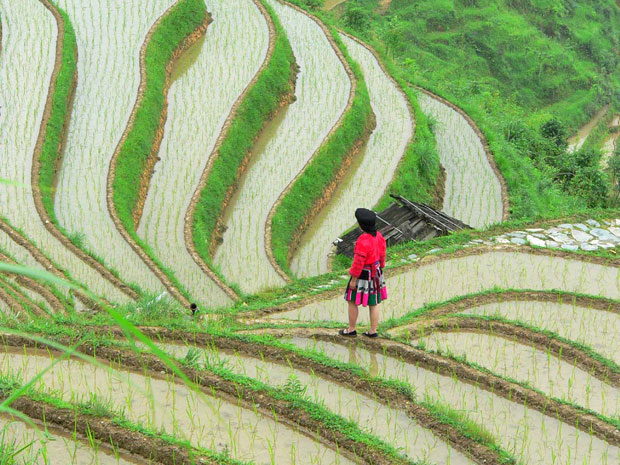
The local people especially like to barbecue food with fire, like bamboo chicken, bamboo rice, roast potatoes, roast eggs, etc. After washing the food, add water into the bamboo, put it on the fire for 20 minutes. The bamboo tube can’t be burnt out, and it should be made sure that the rice and other ingredients cooked, this is really a technical work. The slash-and-burn methods of ancestors have been implanted in their blood, forming a culture of "roast food".
Jinkeng Rice Terraces and nearby villages have not yet been known to many tourists because of the difficult facilities and traffic. This is simply an amazing place. The local minority people of Zhuang and Yao dressed in their own ethnic costumes may comb their long hair and sing and dance upon guests' request and gratuity. The ethnic culture, life style and primitive way of production here give you a glimpse of the ancient Chinese ethnic history.
How to Get to Jinkeng Rice Terraces?
First, you can book a vehicle or take a coach from Guilin Bus Station to Longji Rice Terraces Scenic Area.
After enter the gate, follow the path on your right, and go through Huangluo Yao Village and the way up to Ping’an Village, and then you need to climb a slope to reach Jinkeng Rice Terraces.
More Attractions in Guilin
